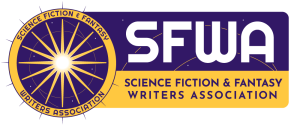by Kristen Simon
Every comic book publisher has different preferences for receiving pitches. Some may not accept pitches at all, as they want to avoid the risk of copyright issues if a submission resembles a storyline they plan to publish.
That said, checking a publisher’s website for guidelines is your starting point. Conduct your due diligence by researching the types of books each publisher releases. For instance, if a publisher exclusively publishes licensed properties, don’t pitch something that is creator-owned. Typically, standard information should be included in every pitch you submit, and this article outlines those details. It’s rare to be able to resubmit a pitch, so it’s crucial to get it right the first time. It’s also wise to connect with the editor in charge of the line you want to pitch; they may have specific preferences regarding how they like to receive pitches or may provide insights into what they are looking for. With all that in mind, here are the basics of what should be included in any pitch, regardless of the publisher.
First, contemplate the title of your pitch. An engaging title is the initial hook that encourages editors to open it and want to read more.
Next, you’ll want to provide the formatting information, as many publishers have limitations on what they can or will publish. Those details include the number of issues and whether it’s an original graphic novel (96+ pages in length), a miniseries (four to six issues), a maxiseries (eight to twelve issues), or an ongoing series. Since the comics market tends to be somewhat fickle, if pitching an ongoing series, it may benefit you to indicate that the format for the first arc consists of five to six issues with a satisfactory ending but remains open to continuation. This number of issues represents a minimal financial risk for a smaller publisher, ensures readers aren’t left hanging, and collects nicely into a trade.
The genre and target audience should also be included. The genre is crucial because publishers often look to fill specific gaps in their publishing plans, such as horror or fantasy. Conversely, they may already have an excess of a particular genre, and this information helps avoid wasting their time. The target audience is also essential. Being specific about your age range is useful; some publishers have different imprints for various age ranges, and if a publisher can’t determine where your pitch belongs, it’s likely to get rejected. Similarly, it could be rejected if it goes to the wrong imprint and doesn’t fit the current lineup. Another reason why outlining the genre and target audience is essential is when pitching manga. Manga is categorized by age range, and this information is vital if a manga publisher has too many YA Isekai books while seeking more adult romantasy.
Listing comparisons, often called “comps,” is an effective way to convey the tone of your pitch. Comparisons can be as simple as “[this] meets [that],” “in the vein of [insert similar popular title already published],” or “If you like [that], you’ll love [this].” This method is also advantageous if your pitch is accepted. For original graphic novels and trade paperbacks distributed through publishers like Penguin Random House and Simon & Schuster, one of their requirements is to list comps. This aids their representatives in selling your book to bookstores and libraries.
Many creators find it challenging to summarize their entire story in just one sentence. However, I encourage you to add a logline because it’s good practice when your comic hits the stands and you attend conventions to market your book. A strong one-sentence logline is invaluable if someone approaches your table and asks about your book. No one wants to stand around listening to a five-minute meandering explanation of your plot!
Including themes in your pitch is optional but recommended. If you pitch a YA book or manga, themes like self-esteem, belonging, or peer pressure can provide valuable information for the publisher to understand before diving into the rest of the pitch.
The concept is the most crucial part of the pitch. It should be half a page and represent the pitch itself. No questions should be raised (e.g., Will so-and-so ever find what they are looking for?), and the conclusion should be fully revealed. This is for the publisher, not the reader; they need to know everything.
The synopsis is where you can break down the book or series into acts or issues. Each should contain a brief paragraph of two to three sentences. Manga features four acts, while graphic novels contain three. Breaking it down by chapters or issues is acceptable if the acts don’t effectively convey the pacing. Include sample sequential art story pages if required by the publisher. This consists of three to five pages of fully penciled, inked, colored (if applicable), and lettered art. I recommend avoiding additional pages, as the editorial staff’s time is valuable, and the likelihood of them reading beyond five pages is low. Including character designs can be beneficial but is usually unnecessary. Unless otherwise stated by the publisher, character designs should not replace sequential art pages.
To end the pitch, conclude with a paragraph that emphasizes what distinguishes this pitch from other works the publisher may be considering or publishing. This is crucial because every publisher seeks something unique they do not already offer or that another publisher isn’t currently releasing.
Conclude your pitch with biographies of the creative team, emphasizing the team’s or your accomplishments. If you are a beginner without substantial credits, simply include your contact information.
These days, it is acceptable to pitch to multiple publishers simultaneously. However, remember that you seldom get an explanation if your pitch isn’t accepted. Avoid asking for feedback, even though it might help you understand what you could improve. Editors are busy, and unless they provide feedback, thank them for their time and ask if they are open to receiving more pitches from you in the future.
Explore more articles from THE COMICS PANEL
 Kristen Simon is a comics industry veteran with over twenty years of editorial experience. She is currently an Executive Editor at Mad Cave Studios, overseeing the manga-inspired imprint Nakama Press. Previously, Kris was a Group Editor at IDW Publishing, overseeing their original graphic novels and new initiatives. At mobile video game companies Netmarble F&C and Com2uS Corp, she was the Editor-in-Chief and Managing Editor, respectively, where she oversaw translating their gaming IPs, such as Summoners War, into comics, webtoons, motion comics, and webnovels. She also ran her own events company, GeekChic Promotions, where she was the co-host of a popular YouTube show called Nerd Rage, which ran weekly from 2017 to 2020. Kris’s career in comics began with her getting a book called Small Gods accepted at Image Comics in 2003, which led to becoming the Editor-in-Chief of Image partner studio Shadowline Comics (Morning Glories) and Silverline Books (Dear Dracula), from 2005 to 2010. She also had a comic book character created based on her likeness, Editor Girl, who first appeared in the Bomb Queen IV: Suicide Bomber series in 2008. She is also the co-host and Chief Operating Officer of the Superfan Podcast.
Kristen Simon is a comics industry veteran with over twenty years of editorial experience. She is currently an Executive Editor at Mad Cave Studios, overseeing the manga-inspired imprint Nakama Press. Previously, Kris was a Group Editor at IDW Publishing, overseeing their original graphic novels and new initiatives. At mobile video game companies Netmarble F&C and Com2uS Corp, she was the Editor-in-Chief and Managing Editor, respectively, where she oversaw translating their gaming IPs, such as Summoners War, into comics, webtoons, motion comics, and webnovels. She also ran her own events company, GeekChic Promotions, where she was the co-host of a popular YouTube show called Nerd Rage, which ran weekly from 2017 to 2020. Kris’s career in comics began with her getting a book called Small Gods accepted at Image Comics in 2003, which led to becoming the Editor-in-Chief of Image partner studio Shadowline Comics (Morning Glories) and Silverline Books (Dear Dracula), from 2005 to 2010. She also had a comic book character created based on her likeness, Editor Girl, who first appeared in the Bomb Queen IV: Suicide Bomber series in 2008. She is also the co-host and Chief Operating Officer of the Superfan Podcast.

